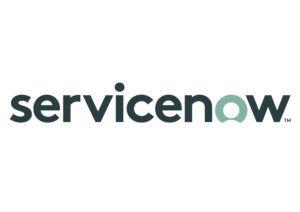Integrating Customer Experience and Employee Experience
Throughout this series of articles, we have consistently emphasized the importance of integrating employee and customer experience in the field service industry. This common thread underscores the crucial role that people, both internal and external, play in navigating the turbulent waves of economic challenges…
Now as we continue to explore these two key aspects of this discussion, customer and employee experience, we will evaluate their criticality in terms of driving profitible field service and importantly how these two seemingly disparate areas can be closely aligned.
The Role of Customer Experience in Field Service
Customer experience lies at the heart of any successful field service organization. It encompasses every customer interaction with the company, from the initial service request to the post-service follow-up.
Providing exceptional customer experiences is essential for customer satisfaction and building long-term loyalty and advocacy. In times of economic uncertainty, organizations must go above and beyond to deliver delightful experiences that differentiate them from competitors.
By integrating customer experience into the fabric of field service operations, organizations can better understand customer needs, expectations, and pain points.
This understanding allows them to tailor their service delivery, personalize interactions, and proactively address issues. Technology solutions, such as CRM systems, data analytics, and AI, can facilitate the collection and analysis of customer feedback, enabling organizations to continuously improve their service offerings and create positive customer experiences that drive loyalty and retention.
Personalized Service Delivery:
Field service technology, such as CRM & FSM systems and data analytics, enables organizations to gather and analyze customer data to gain valuable insights into their preferences, service history, and expectations. This information allows organizations to personalize their service delivery, tailoring each interaction to meet the customer’s unique needs. From customized service offerings to proactive maintenance recommendations, personalized service enhances the customer experience.


Data usage note: By accessing this content, you consent to the contact details submitted when you registered as a subscriber to fieldservicenews.com to be shared with the listed partner of this premium content ServiceNow who may contact you for legitimate business reasons to discuss the content of this paper.
"Effective communication and collaboration are essential for delivering exceptional customer experiences..."
Proactive Issue Resolution:
Field service technology empowers organizations to identify and address customer issues proactively. Through predictive analytics and AI-powered algorithms, potential service issues can be identified before they occur. This allows organizations to take preventive measures, such as scheduling proactive maintenance or remote assistance, to mitigate potential disruptions and ensure a seamless customer experience.
Seamless Communication and Collaboration:
Effective communication and collaboration are essential for delivering exceptional customer experiences. Field service technology facilitates seamless communication between customers, dispatchers, and field technicians.
Mobile applications, real-time notifications, and remote assistance tools enable instant communication and collaboration, ensuring the correct information reaches the right person at the right time. This streamlines service delivery reduces response times, and enhances overall customer satisfaction.
Continuous Improvement:
Field service technology enables organizations to capture and analyze customer feedback, allowing them to identify areas for improvement and drive continuous enhancement of their services. Organizations can gather valuable insights into customer satisfaction and sentiment through feedback mechanisms, surveys, and sentiment analysis. This information can guide service improvements, process optimization, and innovation, ensuring that customer experiences are continuously refined and enhanced.
By leveraging field service technology, organizations can enhance customer experiences by providing personalized service, proactively resolving issues, enabling seamless communication and collaboration, and driving continuous improvement.
These technological capabilities align with the broader goal of integrating customer experience into the core of field service operations, fostering long-lasting customer relationships.
Enhancing Employee Experience for Operational Efficiency:
The role of employee experience is equally crucial in field service operations. Engaged and motivated employees are likelier to deliver exceptional service, exhibit higher productivity, and contribute to overall operational efficiency.
In an economic downturn, organizations must prioritize employee experience to retain top talent, drive job satisfaction, and mitigate the impact of workforce constraints.
Enhancing employee experience involves creating a work environment that fosters growth, empowerment, and recognition. It means providing employees with the necessary tools, resources, and support to excel. By leveraging technology solutions, organizations can streamline processes, automate administrative tasks, and empower employees to focus on value-added activities.
Additionally, investing in training and development programs, encouraging collaboration, and recognizing employee achievements contribute to a positive work culture that fosters engagement and operational efficiency.
Integrating customer experience and employee experience is a holistic approach that recognizes the symbiotic relationship between the two. Engaged employees who feel supported and valued are more likely to deliver exceptional customer experiences. In turn, delighted customers become advocates for the brand, driving customer retention and revenue growth.
As we explore this topic further in the subsequent sections, we will explore specific strategies and best practices for integrating customer experience and employee experience in field service operations, enabling organizations to navigate economic challenges while delivering exceptional service.
"Instant access to critical information empowers technicians, increases their confidence, and enhances their ability to deliver timely and accurate service..."
Streamlined Workflows:
Field service technology, such as automation and digitalization tools, streamlines workflows and reduces administrative burdens on field technicians. By automating tasks like scheduling, work order management, and documentation, organizations enable technicians to focus more on delivering quality service and less on time-consuming administrative work. This optimization of workflows enhances job satisfaction and contributes to operational efficiency.
Access to Real-Time Information:
Field service technology provides field technicians access to real-time information and resources through mobile applications and cloud-based platforms. Technicians can retrieve service histories, equipment manuals, and troubleshooting guides on the go, enabling them to resolve issues more efficiently. Instant access to critical information empowers technicians, increases their confidence, and enhances their ability to deliver timely and accurate service.
Collaboration and Knowledge Sharing:
Field service technology fosters collaboration and knowledge sharing among field technicians and the broader organization. Digital platforms and communication tools enable technicians to connect with colleagues, subject matter experts, and support teams, facilitating real-time collaboration and problem-solving. This collaborative environment enhances teamwork, encourages the sharing of best practices, and contributes to technicians’ professional growth and development.
Training and Upskilling Opportunities:
Field service technology can provide training and upskilling opportunities for technicians.
Online learning platforms, virtual training sessions, and knowledge bases allow technicians to enhance their technical skills and stay updated with industry trends and advancements.
By investing in the continuous development of their technicians, organizations not only improve their operational capabilities and demonstrate a commitment to employee growth and job satisfaction.
"These technological capabilities contribute to higher job satisfaction, increased engagement, and improved operational efficiency...."
Recognition and Rewards:
Field service technology can support recognition and rewards programs to acknowledge the achievements and contributions of field technicians. Performance tracking, gamification elements, and metrics-based evaluations can be integrated into field service solutions to incentivize technicians and create a culture of recognition. Recognizing technicians’ efforts and successes boosts morale, fosters a sense of belonging, and promotes a positive work environment.
By leveraging field service technology, organizations can enhance the employee experience by streamlining workflows, providing access to real-time information, fostering collaboration and knowledge sharing, offering training and upskilling opportunities, and implementing recognition and rewards programs. These technological capabilities contribute to higher job satisfaction, increased engagement, and improved operational efficiency.
Achieving Synergy: Strategies for Aligning Customer Service and Employee Engagement in Field Service Operations
Organizations must recognize the inherent link between customer service and employee engagement to thrive in today’s dynamic field service industry. The seamless integration of these two critical components drives customer satisfaction, loyalty, and advocacy while fostering a motivated and dedicated workforce.
This section will delve into specific strategies and best practices enabling organizations to align customer service and employee engagement effectively. By implementing these strategies, organizations can create a virtuous cycle where satisfied and engaged employees deliver exceptional customer service, enhancing employee morale and reinforcing a customer-centric culture.
Let us explore these strategies that empower organizations to build long-lasting customer relationships while cultivating a supportive and fulfilling work environment for their employees.
Foster a Customer-Centric Culture:
Create a culture prioritizing customer satisfaction and delivering exceptional service. Instill customer-centric values and behaviors among employees, emphasizing the importance of understanding customer needs, providing personalized service, and exceeding expectations.
Empower Field Technicians:
Equip field technicians with the right tools, technologies, and resources to excel. Provide them with mobile applications, remote access to information, and intuitive collaboration platforms that enable efficient service delivery and seamless communication. Invest in training and upskilling programs to enhance their technical skills and customer service capabilities.
Collect and Act on Customer Feedback:
Implement mechanisms to gather customer feedback and sentiment analysis, such as surveys, feedback forms, and social media monitoring. Analyze this data to identify areas for improvement and drive service enhancements. Act promptly on customer feedback to address any issues or concerns, demonstrating a commitment to continuous improvement and customer satisfaction.
Open 360 Degree Communication:
Implement communication channels that enable seamless and real-time communication between customers, dispatchers, and field technicians. Use mobile applications, chat platforms, and real-time notifications to ensure timely updates, status reports, and collaboration. Facilitate smooth coordination and transparency throughout the service process.
Continuously Learn and Adapt:
Foster a learning culture within the organization, encouraging employees to constantly learn and adapt to changing customer needs and industry trends. Provide ongoing training, access to knowledge bases, and opportunities for professional development. Encourage employees to share best practices and lessons learned to foster knowledge sharing and innovation.
By implementing these strategies and best practices, organizations can effectively integrate customer experience and employee experience in field service operations. This integration enables organizations to navigate economic challenges while delivering exceptional service, building strong customer relationships, and fostering engaged and motivated employees.
Reflective Questions for you to apply the themes discussed here to your own organisation:
#1: How does the customer experience impact the success and profitability of your field service operations, and what specific steps can you take to enhance it?
#2: What are the key touchpoints in your customer journey, and how can you align your field service processes to ensure a seamless and delightful customer experience at each stage?
#3: What are the critical pain points and challenges your field service technicians face, and how can you address them to improve their experience and productivity?
#4: How can you foster a customer-centric culture within your field service organization, ensuring that customer service and employee engagement are top priorities?
#5: How can you create effective communication channels and collaboration between your field service employees and customer service teams, enabling them to work together seamlessly to resolve customer issues and provide a unified service experience?
Do you want to know more?
If you are already a subscriber you can access the report instantly on the ‘read now’ button below. If the button is showing ‘Join FSN FREE’ please log-in and refresh the page.
If you are yet to subscribe simply click the button below and complete the brief registration form to subscribe and you will get instant access to this report plus a selection of premium resources each month completely free.


Data usage note: By accessing this content, you consent to the contact details submitted when you registered as a subscriber to fieldservicenews.com to be shared with the listed partner of this premium content ServiceNow who may contact you for legitimate business reasons to discuss the content of this paper.


